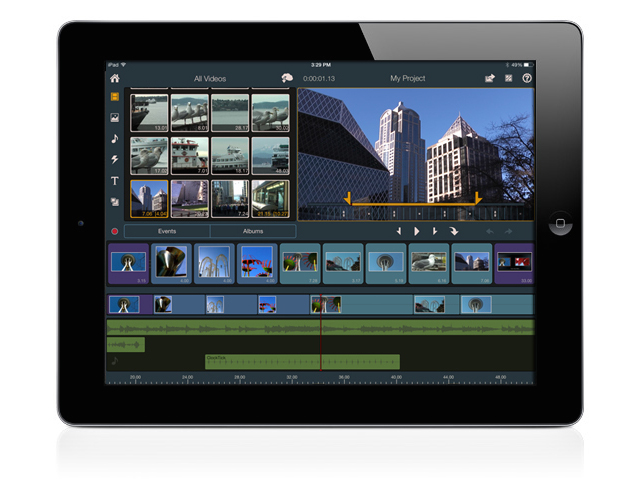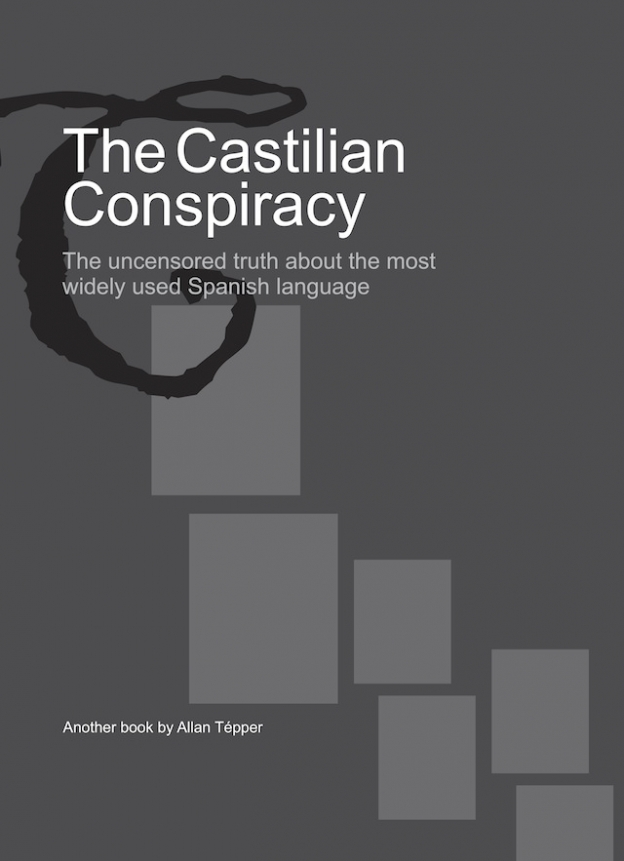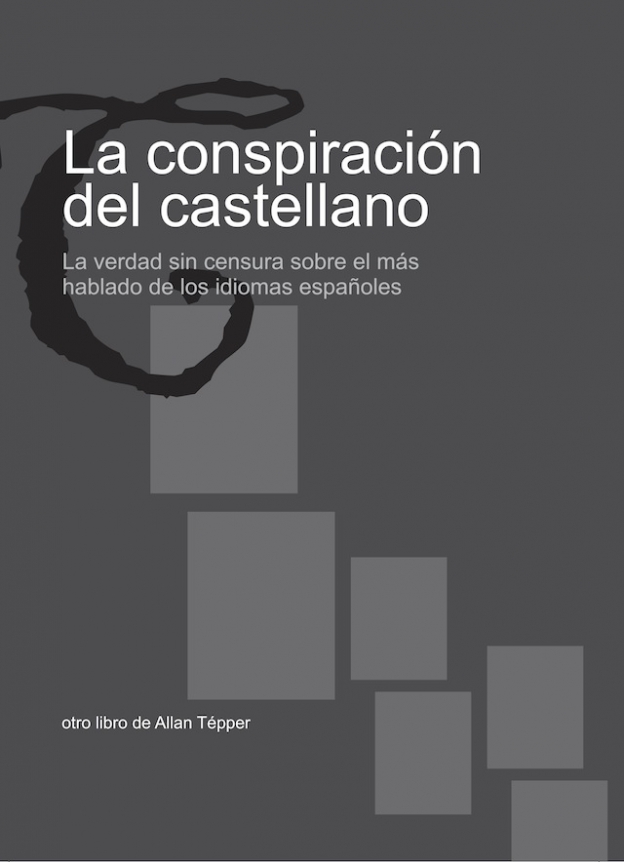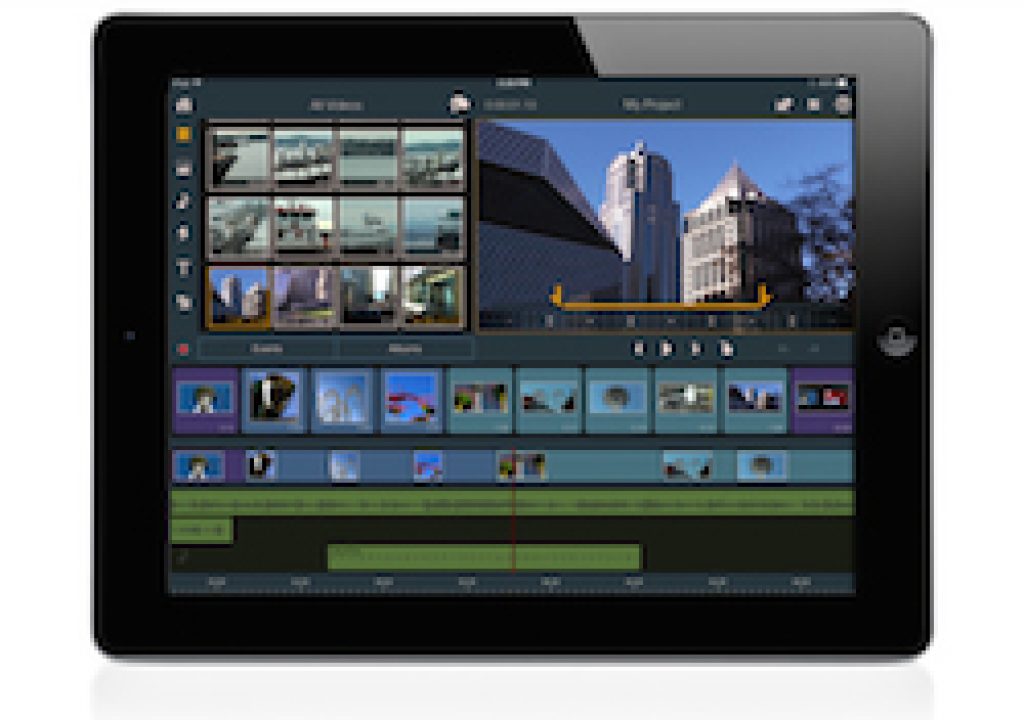
Pinnacle Studio for iPad (previously known as Avid Studio for iPad) has thankfully added missing framerates including 24 + 25, plus other improvements. In my articles in ProVideo Coalition magazine, I have covered the application since its birth from Avid, when it changed its name and owner, and when it became the first iOS video editing app to support translucent alpha channels. Ahead I’ll cover the improvements in detail, what’s critically missing, and what is simply wrong and must be fixed.
Improvements in Pinnacle Studio for iPad 5.03
- Rebuilt for iOS 7: new UI with a cleaner look
- Create 24, 25, 30, and 60 fps (frames per second) projects (See what’s good, what’s incomplete, and what’s wrong with the framerates, ahead in this article.)
- Duplicate timeline clips to easily create title and PIP templates
- Rotate media button (photo and video)
- Transfer projects to and from Pinnacle Studio for iPhone or iPod Touch
- Adjust audio speed and keep the pitch with the improved speed control
- Scrub video frame-by-frame using the new Jog Wheel on the preview
- Control the media in each drop zone and PIP including fit mode, speed, volume, fade in and fade out
- All-new video tutorials and new pop-up help
- Listen to your project while recording a voice over when headphones or Bluetooth devices are connected
- Double-tap on the preview for quick full-screen viewing
- “Slip-Trim” your video with the new easy-to-use slip trimmer (including PIP and drop zone video)
- Enjoy new gestures on the Precision Trimmer (swipe 1 or 2 fingers left/right for 1 or 10 frame trims)
- Animate your photos more easily with new Pan and Zoom settings (copy start to end or end to start, reset and remove)
- Set the Default Volume of all audio clips in Settings
- Remove render files with ‘Cleanup Temporary Files’ in Settings
- Set your Default Project Frame Rate in Settings (See what’s good, what’s incomplete, and what’s wrong with the framerates, ahead in this article.)
- Full 64-bit support for improved performance and reduced memory use
- You can now triple-tap to separate audio from titles
- Now keeps last position in all library categories and groups
- Added Done button for iPad keyboard to make dismissing preview text editing more apparent
Fixes
- Automatic adjustment to options if export is too large for device or upload service
- Audio from Bluetooth speakers if connected and the microphone nearest the camera will be used when recording
- Cloud media import now shows all supported file types * Multiple fixes for export failures
- Numerous bug fixes and UI improvements
- Fixed issues with scrub performance
- Fixed fill-focus positioning for 180-degree-oriented videos
- Fixed shift in quality/saturation with titles on videos
- Fixed fill-focus positioning for photos with titles
- Fixed volume shifts at beginning and end of transitions
- Fixed timeline shifting to center when trimming tail of clip in some cases
- Fixed icons in storyboard show wrong image when dragging clip through storyboard
- Fixed PSI–1309: Crash due to slip trimmer icon count calculation
- Fixed crashes when adjusting text attributes quickly
- Fixed crashes after memory warnings
2 good framerates, 1 missing framerate, and 2 incorrect framerates in Pinnacle Studio for iPad
Before getting into the details of each framerate, I will first clarify that framerates in the final render of Pinnacle Studio are exact framerates, as they should be. This is unlike FiLMiC Pro, which is for shooting—not editing, where the framerates are only targets and it records VFR (variable framerate). In FiLMiC Pro, they might as well label the framerates as ±24, ±25, and ±30, since it later becomes corrected when editing with software which support VFR, which now include Final Cut Pro X, the latest version of Premiere Pro CC, and Pinnacle Studio for iPad.
24p
As of version 5.03, Pinnacle Studio for iPad now offers 24p. Immediately, I wanted to determine which 24p, since unfortunately, many developers, manufacturers, and even mediographers often say “24p” when they really mean 23.976 (of which some of them unfortunately shorten it to 23.98). After rendering out a project in “24p” with Pinnacle Studio for iPad version 5.03, I sent it to my Mac and determined that it was exactly 24.000. That is okay, since the exact 24.000 is indeed a standard, used in filmout and in DCP, and is even usable on Blu-ray. However, 24.000 is not good for over-the-air playback or for DVD, and most commercial Blu-ray disks are done at 23.976, not at 24.000. For DVDs, it should also be 23.976, not 24.000. To make a long story short: many more Pinnacle Studio for iPad users will be better served with a 23.976 setting, even though the 24.000 setting should also remain as an option. Yes, online services like Vimeo Pro and YouTube accept either 23.976 or 24.000 without any issue.
25p
As of version 5.03, Pinnacle Studio for iPad now offers 25 progressive frames per second, and it is proper 25.000 frames per second. This framerate is common in PAL and ex-PAL regions, and I am glad that it was added to Pinnacle Studio for iPad.
30p
Bad news here. The “30p” produced by Pinnacle Studio for iPad turns out to be exactly 30.000 progressive frames per second. I am sorry to be the bearer of bad news, but 30.000 frames per second has not been a standard since television in the United States changed from black-and-white to color with NTSC. Since then, everything intended to be ±30 must be 29.97. The 29.97 framerate is the standard for over-the-air broadcasting in NTSC and ex-NTSC regions, DVDs, and Blu-rays, even though with Blu-ray 29.97p must become 29.97PsF, which appears to be 59.94i (this is not an issue for Pinnacle Studio for iPad: the conversion to PsF is done by the DVD software or encoding software). So to make it clear: 30.000 is not a standard, and the developers of Pinnacle Studio for iPad must completely eradicate 30.000 from the application, and instead only offer 29.97. It is true that online video services like Vimeo Pro and YouTube will accept non-standard video at 30.000, but they will also accept the standard 29.97 with no issue, and absolutely nothing is gained by producing non-standard video. Please remove 30.000 and substitute it with 29.97. That way, the 29.97 video will be compatible with everything: online videos, Blu-rays, DVDs, and over-the-air television.
60p
I imagine that the “60p” project setting was included in Pinnacle Studio for iPad for those who want to shoot 720p, since 1080/59.94p is not distributable. In any case: the standard is 59.94, not 60. Please remove 60 and replace it with 59.94, since 59.94 is a standard, 60.000 is not.
Frequently asked questions
How many decimals are enough?
Okay. I am the first to admit that even numbers like 23.976 and 29.97 are not exact either. They are actually simplifications of a more complex number, which would be the result of 30 ÷ 1/1.001 or 24 ÷ 1/1.001, whose results are very long and not feasible to be used in common speech or even writing. However, the numbers that are close enough for are purposes are 23.976 and 29.97. If we know that the camera shoots at 23.976, 24.000, or 29.97, we know that framerate to set in our editing software to avoid a mismatch, or we know what we must deliver, and we can determine whether it is feasible to shoot at the same.
Why it is important to express 23.976, not 23.98?
It’s a question of being able to explain in a workflow the value of a slow motion shot. If you shoot at 59.94 progressive frames per second and then conform to 23.976, you are achieving exactly 2.5x slow motion. The numbers work together perfectly with 23.976; they simply don’t with 23.98.
Why the PAL-derived 25/50 world shines thanks to its simplicity?
All of the problems explained above are related to the NTSC-derived video world, which converted 60 fields per second into 60 ÷ 1/1.001 (±59.94) and 29.97 frames per second into 30 ÷ 1/1.001 (±29.97). The PAL-derived video world shines thanks to its simplicity, since 25 is always 25.000 and 50 is always 50.000.
Incorrect audio sampling frequency
In my tests with Pinnacle Studio 5.03 for iPad, I exclusively fed it footage shot with FiLMiC Pro with audio sampled at 48 kHz. As stated in many prior articles, 48 kHz is the absolute standard for audio sampling for digital video. Whether we are talking about DVDs, Blu-rays, or HD videotape formats (like HDV, Panasonic’s DVCProHD, Sony’s HDCAM or HDCAM-SR), or DCP, the standard sampling rate is 48 kHz. Although online video services like Vimeo Pro and YouTube will accept non-standard video with audio sampling incorrectly sampled at 44.1 kHz, nothing is gained by sampling the audio at a non-standard rate, since Vimeo Pro and YouTube will also accept videos with the standard 48 kHz. Please eradicate 44.1 kHz from Pinnacle Studio for iPad and make it produce 48 kHz exclusively. Nothing is gained by creating non-standard videos, since standard videos with audio sampled at 48 kHz will be acceptable everywhere, and no resampling will be required. According to my friend Rubén Abruña (creator of the documentary known as La Casa Ausente (or in English, The Absent House), many of the film festivals request formats including DVD, Blu-ray, and DCP, all of which only accept 48 kHz audio. By the way, iOS absolutely supports 48 kHz, and is already offered by apps like FiLMic Pro and RØDE Rec.
Please add support for stereo>Dual Mono footage
It is great that Pinnacle Studio for iPad now supports L-cuts. What is still missing is to take stereo footage and treat it as Dual Mono. After it is dual mono, there should be the capability to manipulate each mono track independently. This is especially valuable when editing interviews shot with two independent microphones recorded as left and right. See my related articles:
- Five iOS-capable, dual-input balanced>USB audio interfaces compared
- Make Dual Mono work between FiLMiC Pro and FCP X 10.0.8 & 10.0.9
- Video framerates and the Tower of Babel: a translation guide
Prior articles about this app
- iPad video editing finally supports translucent logo overlays! (February 2014)
- Flaw in Avid Studio & iMovie for iPad makes them more appropriate for broadcast news… (June 2012)
- Avid Studio for iPad is now Pinnacle Studio and is free, temporarily (September 2012)
- Avid now lets you edit video on your iPad for US$4.99. Should you? (February 2012)
Upcoming articles, reviews, and books
Stand by for upcoming articles, reviews, and books. Sign up to my free mailing list by clicking here.
Si deseas suscribirte a mi lista en castellano, visita aquí. Si prefieres, puedes suscribirte a ambas listas (castellano e inglés).
My latest book (paperback + ebook)
My most recent book is available in two languages, and in paperback as well as an ebook. The ebook format is Kindle, but even if you don’t have a Kindle device, you can read Kindle books on many other devices using a free Kindle app. That includes iPad, Android tablets, Mac computers, and Windows computers. Although generally speaking, Kindle books are readable on smartphones like Androids and iPhones, I don’t recommend it for this particular book since it contains both color photos and color comparison charts. The ebook is also DRM-free.
In English:

In English, it is currently available in the following Amazon stores, depending upon your region:
- Amazon.com, for the US and other countries in the Americas that don’t currently have their own Amazon store, or anywhere if you simply prefer it
- Amazon.br for Brazil
- Amazon.ca for Canada
- Amazon.de for Germany
- Amazon.es for Spain pero a lo mejor lo preferirás en castellano, a continuación)
- Amazon.fr for France
- Amazon.in for India
- Amazon.it for Italy
- Amazon.co.jp for Japan
- Amazon.com.mx for México
- Amazon.co.uk for the United Kingdom
Or in your favorite bookstore by requesting ISBN–10: 1456310232 or ISBN–13: 978–1456310233.
En castellano:

En castellano, está disponible actualmente en las siguientes tiendas Amazon, según tu región:
- Amazon.com para EE.UU. y todas las Américas donde no existe ninguna tienda particular… o en cualquier parte si simplemente lo prefieres
- Amazon.com.br para Brasil
- Amazon.co.jp para Japón
- Amazon.de para Alemania
- Amazon.es para España
- Amazon.fr (Francia)
- Amazon.in para India
- Amazon.it para Italia
- Amazon.com.mx para México
- Amazon.co.uk para el Reino Unido
o en tu librería preferida al solicitar el ISBN–10: 1492783390 ó el ISBN–13: 978–1492783398.
Allan Tépper’s other books, consulting, articles, seminars & audio programs
Contact Allan Tépper for consulting, or find a full listing of his books, articles and upcoming seminars and webinars at AllanTepper.com. Listen to his TecnoTur program, which is now available both in Castilian (aka “Spanish”) and in English, free of charge. Search for TecnoTur in iTunes or visit TecnoTur.us for more information.
FTC disclosure
No manufacturer is specifically paying Allan Tépper or TecnoTur LLC to write this article or the mentioned books. Some of the other manufacturers listed above have contracted Tépper and/or TecnoTur LLC to carry out consulting and/or translations/localizations/transcreations. Many of the manufacturers listed above have sent Allan Tépper review units. So far, none of the manufacturers listed above is/are sponsors of the TecnoTur programs, although they are welcome to do so, and some are, may be (or may have been) sponsors of ProVideo Coalition magazine. Some links to third parties listed in this article and/or on this web page may indirectly benefit TecnoTur LLC via affiliate programs.
Copyright and use of this article
The articles contained in the TecnoTur channel in ProVideo Coalition magazine are copyright Allan Tépper/TecnoTur LLC, except where otherwise attributed. Unauthorized use is prohibited without prior approval, except for short quotes which link back to this page, which are encouraged!

Filmtools
Filmmakers go-to destination for pre-production, production & post production equipment!
Shop Now













